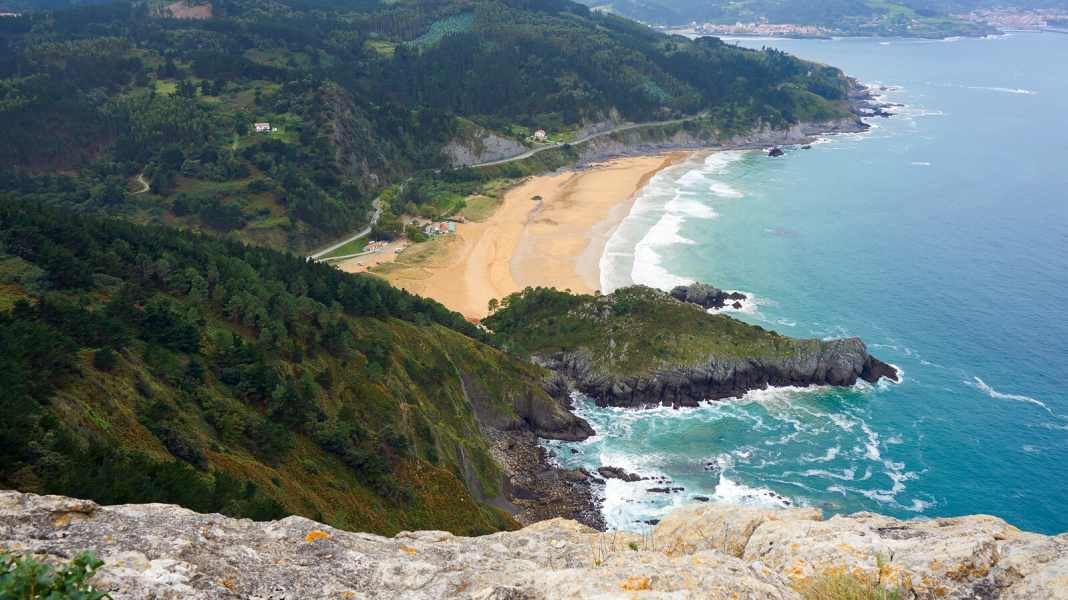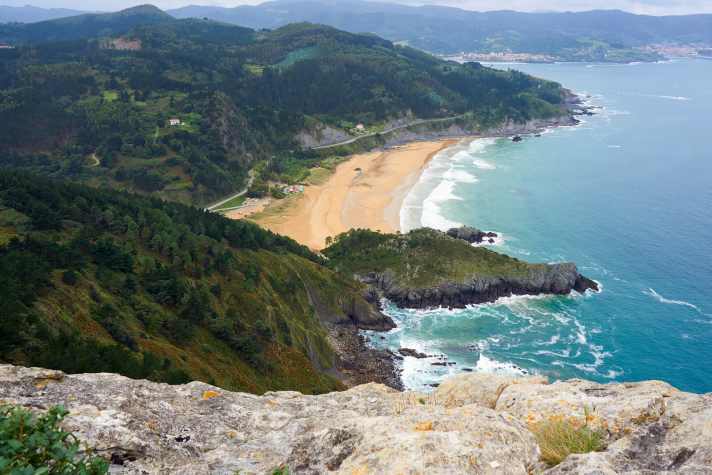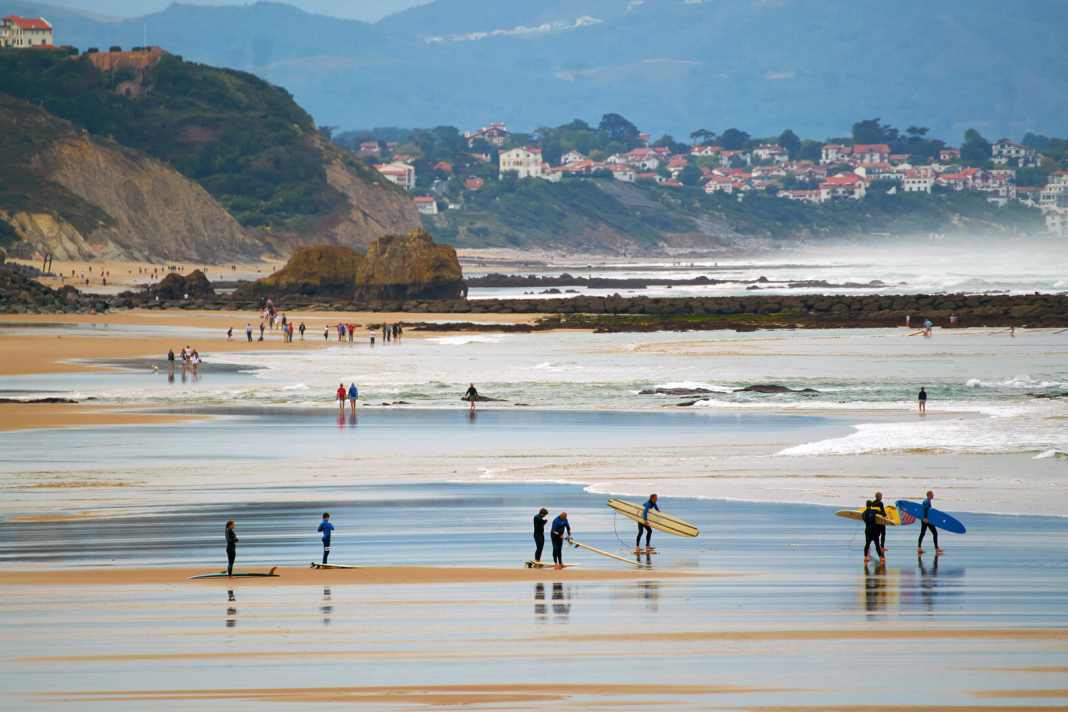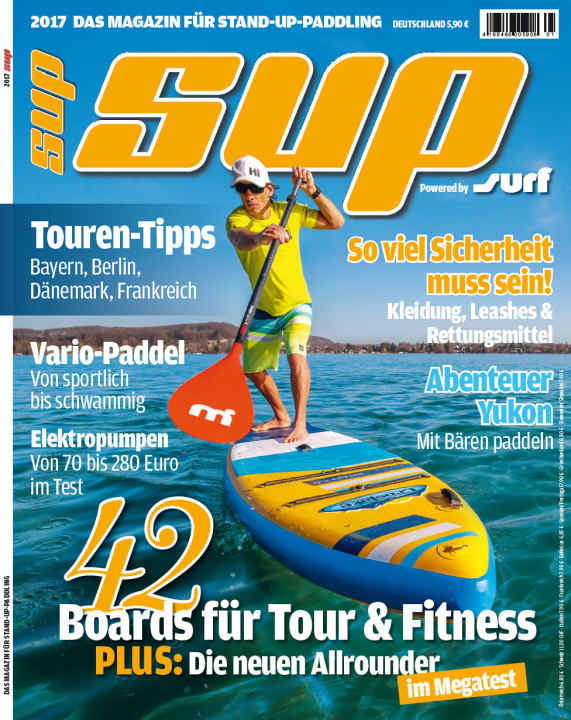SUP Surfing Europe: Road trip on the west coast


The Atlantic coasts of France and northern Spain are no longer an insider tip - this year, Biarritz is celebrating 60 years of surfing tradition - but the mix of pleasant temperatures, constant swell and impressive nature and culture in a relatively small area is hard to beat. This is also the reason why you can reach the line-up at Grand Plage and Co. in summer with all the surfers almost dry-shod. And regardless of whether you're in a surfmobile that's due for MOT or a luxurious McRent Cruiser, the surfing feeling of the 60s permeates every mobile here and the hope of relatively empty lines and relaxed locals is not completely unfounded either. The best time to visit for lots of waves, few tourists and still pleasant temperatures is between September and the beginning of November or from April to June.
First stop Les Landes
This largest contiguous forest area in Western Europe stretches from Biscarosse in the north down to Bayonne. Behind the dense pine forests is an endless sandy beach with some of the best beach breaks in Europe. It's not for nothing that the pros of the World Surf League stop here every year at the beginning of October. As the sandbanks are constantly shifting, it makes sense to drive around a bit. However, if the wind blows somewhere onshore, the entire stretch of coast is blown away. There are no sheltered corners here. You have to take what comes. We stop for two days in Contis Plage. Here you can spend the night on a site set up especially for campers, not far from the beach. Although there are no reefs lurking here, in spring and autumn this is absolutely no place for beginner surfers. The waves are powerful, the shorebreak at high tide is impressive and the same applies to the currents between the sandbanks. If you're lucky, you'll have really powerful lefts and rights to choose from and if you don't mind paddling around a bit, you'll quickly find a wave just for yourself at this time of year.
Second stop Biarritz
Getting out on the water here is simply a must. The best place for stand-up paddlers is the Cote Basque. The Grand Plage in front of the casino is reserved for surfers. However, parking near the spot is no easy task, even in the off-season by bus or campervan. After surfing, having a coffee above the spot and looking out over the water is almost as good as catching an incredibly long wave all to yourself at the foot of the steps, which on many days is not too steep. No wonder there are so many longboarders here. But stand-up paddlers, usually still a rather rare species at the spots, can also regularly be seen in the line-up here. You have to be careful with the many surfing students and when the tide is out. Then the huge beach has disappeared and you need to be experienced not to miss the slippery stairs in the shore break. The same applies to big swells. In addition to experience, you need a thick leash and self-confidence to stand up to the current and the locals. The "Le Surfing" directly at the spot is a great place for apres surf. Stylish mix of surfing flair and relatively inexpensive after-surf snacks with a perfect view of the spot. You can even spend the night in a campervan for a short time not far away on a site specially set up for campervans opposite the Ocean City Museum. Or at one of the numerous campsites. However, many of them close at the beginning of October.

Third stop Hendaye
The gently sloping sandy beach and the bay protected by the large harbour breakwater make this French city spot with Spanish flair the perfect playground for surfing beginners. Accordingly, many surf schools occupy the line-up here. However, the beach is very extensive and you should be able to find one or two less crowded peaks quickly, especially with a SUP. When all other spots close out, even experts will find a long wave here. Parking spaces for camper vans are more difficult to find due to the rather short parking bays on the promenade.
Fourth stop Bilbao
Okay, no surf, but a visit to the Guggenheim Museum is definitely fun and in the evening you change sides of the river and go to one of the many bars in the old town to eat pintxos and drink wine. What is offered here as pintxos (bread rolls) is the finest creative cuisine and has nothing to do with our sandwiches.
Fifth stop Mundaka
The best Left in Europe is just over an hour away from Bilbao. This is not the only reason why it is never really empty here when the wave is running. Things are a little more relaxed on the other side of the river. In the next bay in Laga, you can also stay overnight and the spot offers a rough backdrop with fast, steep waves that break over sand and a few rocks. From here, you can also head straight back to France. Either take the motorway back without a diversion or take your time on the coastal road.






Stop six, seven and eight...
It is winding, sometimes quite steep and not every bend can be negotiated in one go, but the scenery and views are worth the diversions along the coast. Especially as there are also a few spots waiting for you here. Lekeitio has a small island that you can hike over to at low tide. Small, but very clean and relaxed, long-running waves with rising water are a lot of fun. However, if the swell gets too big, the wave quickly closes out. In the evening, you can take a leisurely stroll over to the old town and enjoy the best Spanish tapas in one of the many bars. If you stay on the coastal road, you will pass Deba beach after many bends. Known for its powerful and large right. More of a spot to watch than to play. But it can also be a nice alternative with a small swell. The last stop before the border is Zarautz, another larger town. Here, too, there is a large beach, few car parks for motorhomes and quite a lot of traffic on the water. But there is almost always a wave here, only pure west swell is covered. On land, there is a complete surfing infrastructure with several shops and surf schools.
If you know and respect the rules of the right of way in the waves and have a little wave experience, you will get your extra portion of perfect waves in the Basque Country, especially with a campervan and certainly also with a SUP board. If you don't stick to the pecking order in the line-up, you can't count on the mercy of the surfers, even in the off-season, who are actually always in the majority at the well-known spots and, depending on their mood, ignore SUP surfers or sometimes want to scare them away from their wave. At more longboard-heavy spots, there is generally a more relaxed atmosphere in the line-up. Speaking of well-known spots, you can pick up a free surfer map in almost every surf shop, which explains all the well-known spots in the area in detail and also includes a list of surf shops and schools.


